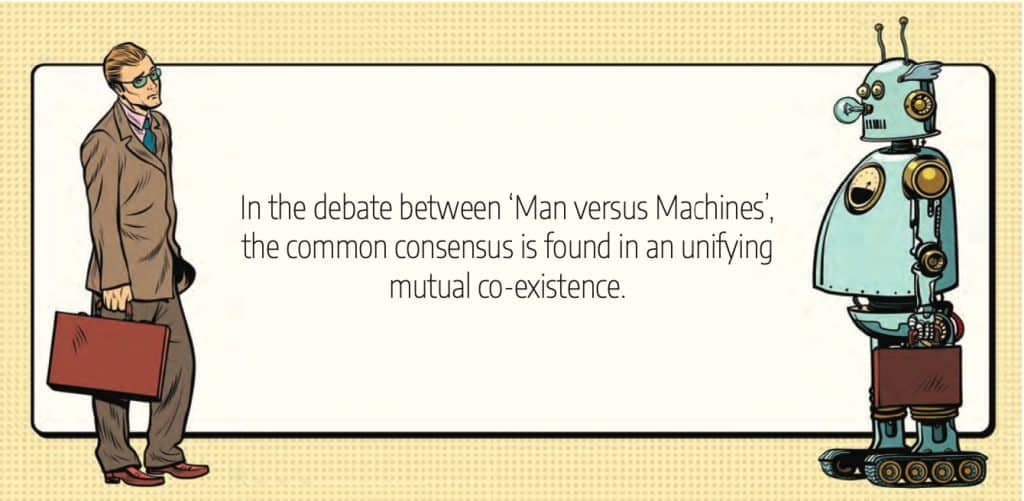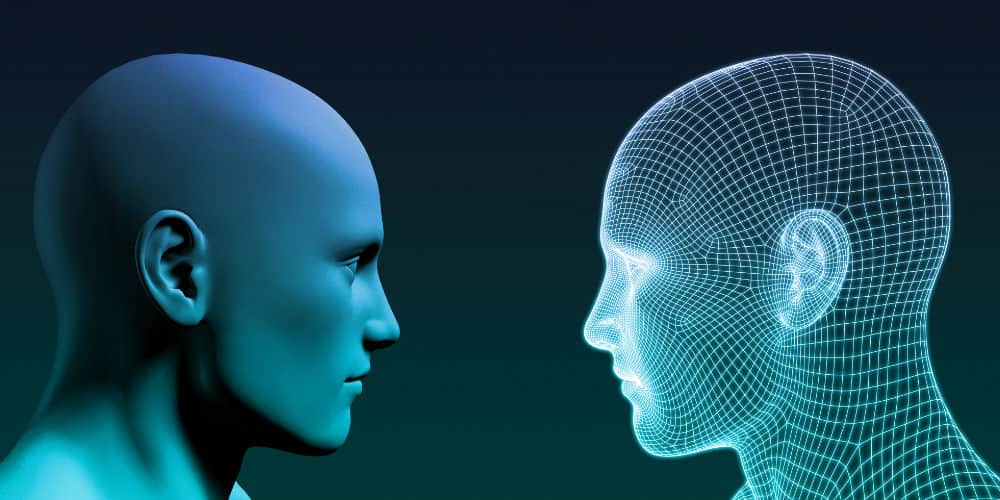In 2017, our National Day Parade took a unique spin to its usual festivities with its showcase of a cluster of up to 300 drones. Coming together in perfect synchrony, these intelligent machines lit up the starless night sky with breathtaking imagery, leaving our nation in awe.
As Singapore continues to move towards its goal as a ‘smart nation’, we see automation, robotics and Artificial Intelligence (AI) infiltrate a vast number of industries and practices. While many do enjoy the benefits these bring, the rise of automation and smart machines are accompanied by a common fear that robots may eventually replace humans causing an economic and social divide where jobs are concerned.
Smart systems are often viewed as a threat rather than a tool to increase accuracy and productivity in our everyday life. Will machines kill jobs or create new ones for Man? In this article, we will explore some of the pros and cons of this ongoing argument.
Will Machines Kill Jobs or Create New Ones for Man?
In Singapore alone, we are already witnessing how robots and smart machines are replacing some of our eons-old tasks. There are currently some restaurants and hawker centres who have traded traditional cleaning “aunties/uncles” with the deployment of robots to serve food and clear dirty trays.
The novelty of this has garnered a positive reaction from the crowd. However, there are still many who are sceptical and apprehensive about engaging with machines in contrast to a fellow human being.
According to a Forbes article, the use of AI has birthed a plethora of intelligent machinery and systems providing increasing business prospects for stakeholders which include (but are not limited to), new business models and new value propositions.
Research conducted by Ernst and Young states that, “organisations enabling AI at the enterprise level are increasing operational efficiency, making faster, more informed decisions and innovating new products and services.”
Many companies are optimistic about an AI-driven future as it presents cost-saving opportunities with a higher productivity rate. It serves as a platform for human creativity to springboard from the benefits which machine usability and scale brings. This is particularly useful for large-scale production lines found in factories and warehouses who thrive on automation.

Upskilling & Emphasis on STEM Education
With new technology comes a need for continued learning on how to handle these systems effectively. Hence, human labour will undeniably require a mass upskill in order to meet the needs of this changing work landscape.
In order to keep up with where the future is headed, there is talk about an increased emphasis in STEM subjects (science, technology, engineering and mathematics) as it becomes increasingly relevant when handling smart systems.
Technology is Intended to Complement Human Intelligence
While intelligent machines can be programmed to mimic the behavior of humans, our current technological capacity limits it to just that. The same Forbes article explains that, “though artificial intelligence will be more productive than human workers for routine and repetitive tasks, humans will always outperform machines in jobs requiring relationship-building and imagination.”
The main idea is not for robots to replace humans, but rather serve them. There is no competition when it comes to the human brain, in aspects such as thinking spontaneously, practising free will and utilising problem solving skills. The goal is for smart systems to complement human intelligence.
They are aimed at relieving us from certain repetitive tasks so we can focus our manpower and resources in other areas, thereby value-adding to our work. It is important to also note that there are some smart systems which fail to deliver hundred percent accuracy.
One example that illustrates this is the facial recognition function on our smartphones. It has been proven that facial recognition is not fool-proof when it comes to darker skinned ethnic minorities and has on several occasions, identified the wrong individual(s) when used by the police in some countries.
With the rise of smart systems, an increase in threats also present itself. Additionally, this has brought about a demand for greater cybersecurity efforts to combat this.
With the majority of information stored in the cloud and space overtime, there is a high risk of hackers getting their hands on highly confidential and encrypted information which has the potential to be weaponised and wreak havoc when found in the wrong hands.
Harmonious Human-ai Collaboration Is the Goal
In essence, if we work towards a harmonious human-AI collaboration where we use intelligent technology for the common good, while pairing it with ethical and social responsibility, further accompanied by new regulations in place for information security, it will provide unlimited potential for businesses to succeed at a greater level in the next decade or so.
In the debate between ‘Man versus Machines’, the common consensus is found in an unifying mutual co-existence. We certainly have the option to expand human capacities and capabilities through smart collaboration with machines.
Hence, Singaporeans need to learn how to work alongside smart machines and be successfully integrated in the near future. Our workforce is transforming, to say the least. Are we prepared for this impending technological revolution? Only time and training will truly tell.
Learn more about the global workforce divide in the intelligent age, a study of automation rates across industries and new skillsets are in-demand.
References:
https://www.straitstimes.com/singapore/manpower/will-it-be-man-versus-machine
https://www.forbes.com/sites/vishalmarria/2019/01/11/the-future-of-artificial-intelligence-in-the-workplace/#5ed79e2573d4

